Waste to Energy
Background
Cattle manure from CAFOs contributes to air and water pollution through the emission of greenhouse gases and nutrient runoff to surrounding bodies of water. Rather than simply disposing of the waste and allowing it to generate pollutants, we can process this waste into bio-electricity.
The Waste to Energy case study is a management-type model involving a system of CAFOs, technology sites, and demand nodes. The CAFOs act as the suppliers of cow manure. They can choose to either process the cow manure at a technology site or dispose of it at a disposal facility.
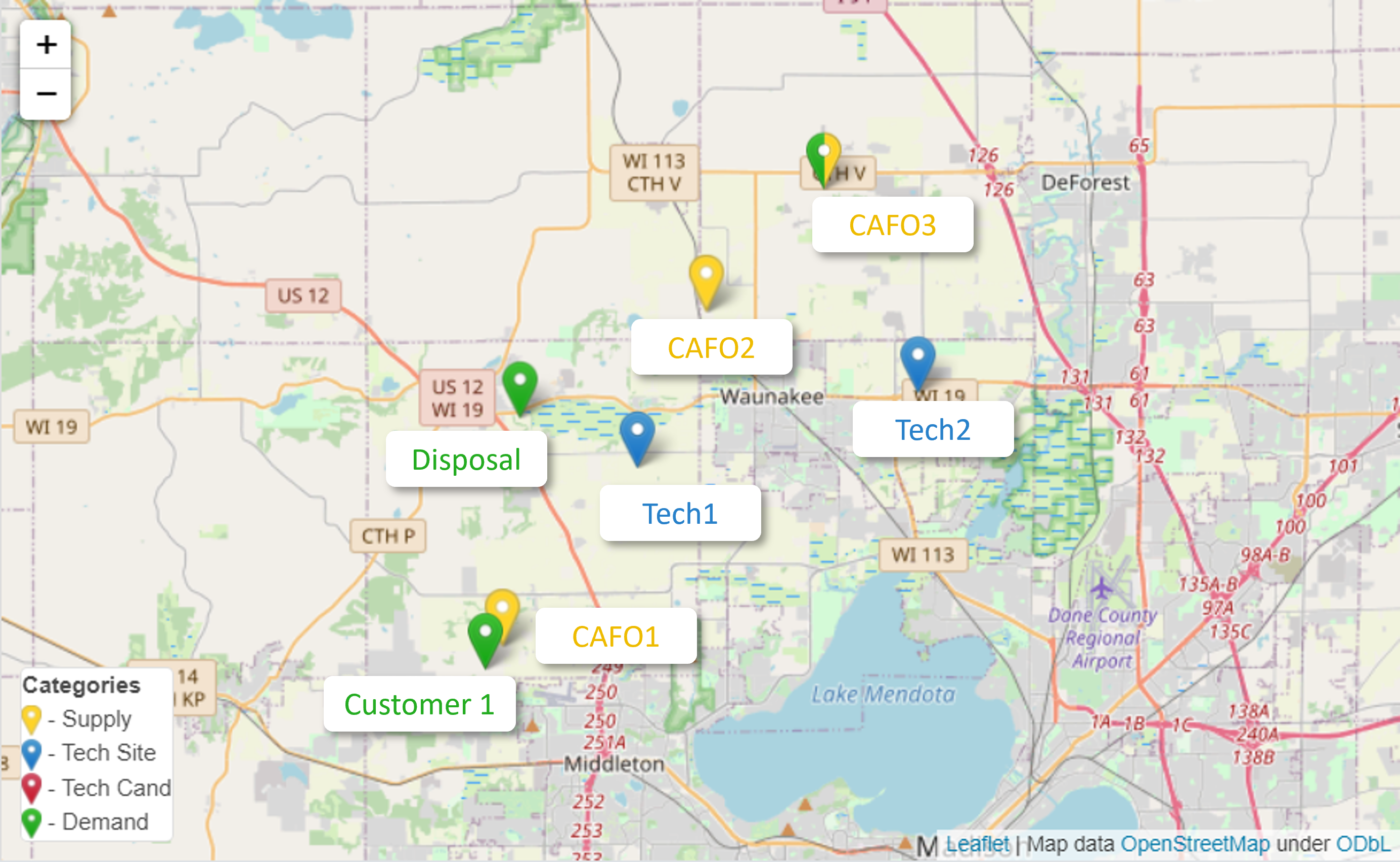
The technology sites contain anaerobic digestion + electricity generation technologies (shown below) which can process cow manure into bio-electricity and digestate. The digestate is a waste product that can be applied to crop fields or disposed of, and the bio-electricity can be sold to and used by customers.
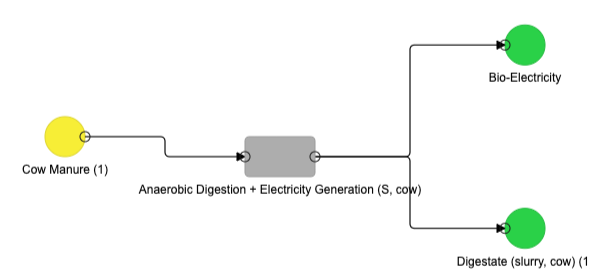
Given this system, the goal of this case study is to encourage CAFOs to process their waste by applying various electricity prices.
Running this system through ADAM will give us the most economically favorable result. However, this does not mean that the system will be profitable; sometimes the most favorable result is the one with the least losses. When the transportation and operating costs outweigh the earnings from selling bioelectricity, CAFOs will not process any of their waste and instead will choose to dispose of it. In order to encourage CAFOs to process their waste, the price of bio-electricity must be adjusted so that processing the waste is favorable.
In this case study, we will analyze the effect of three different electricity prices: low price, market price, and high price.
Low Electricity Price
In the low electricity price scenario, all CAFOs decide to dispose of all cow manure rather than processing it into bio-electricity. This is shown on the map through the black lines going from each CAFO to the disposal node.
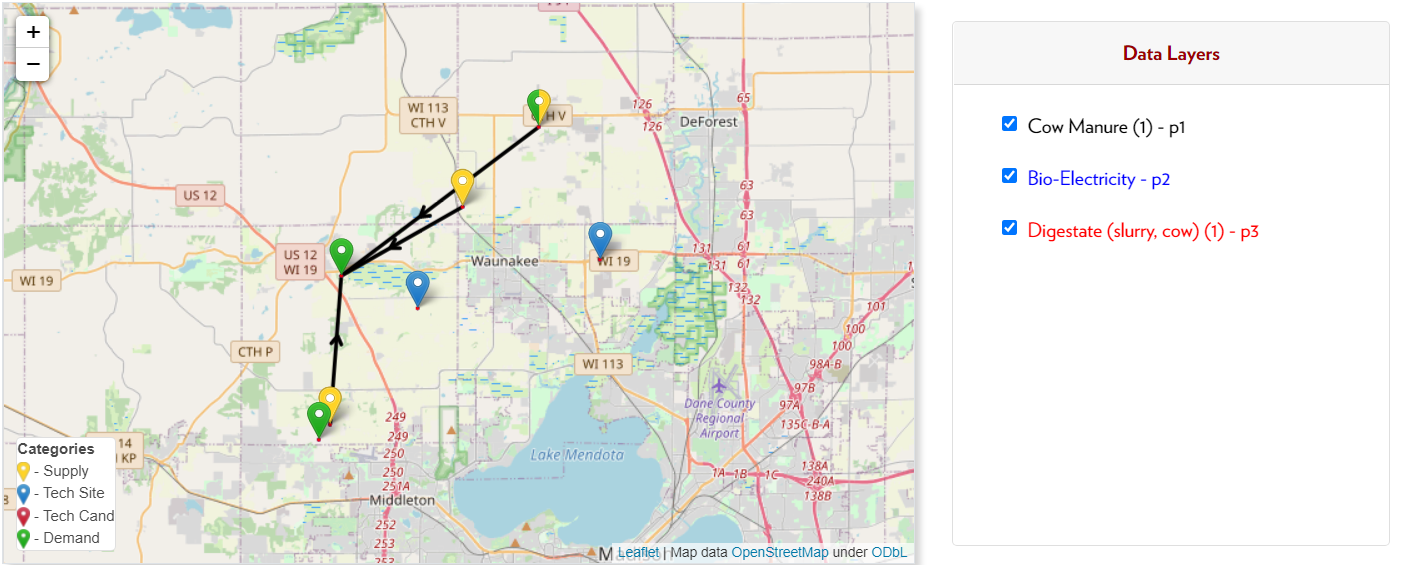
These results indicate that the price of bio-electricity is so low that the CAFOs would rather dispose of the waste rather than process it. If you were to double-click on the CAFOs located on the ADAM website, you would find that the price of supplying the manure is negative for each CAFO, meaning that each CAFO is losing money by supplying waste. Additionally, the disposal facility is purchasing the manure at zero cost. This means that the CAFOs are suffering a loss by simply disposing of the waste. Knowing this, the CAFOs still decided to dispose of their waste, meaning that processing the waste would result in a greater loss.
Market Electricity Price
The next case we will look at is the market price scenario. Market price indicates that the electricity price is set such that it reflects the actual electricity price.
The results, which are displayed below, show identical results to the Low Electricity Price scenario: all lines are going to the disposal node. This demonstrates that current electricity prices are still not high enough to incentivize CAFOs to process their waste.
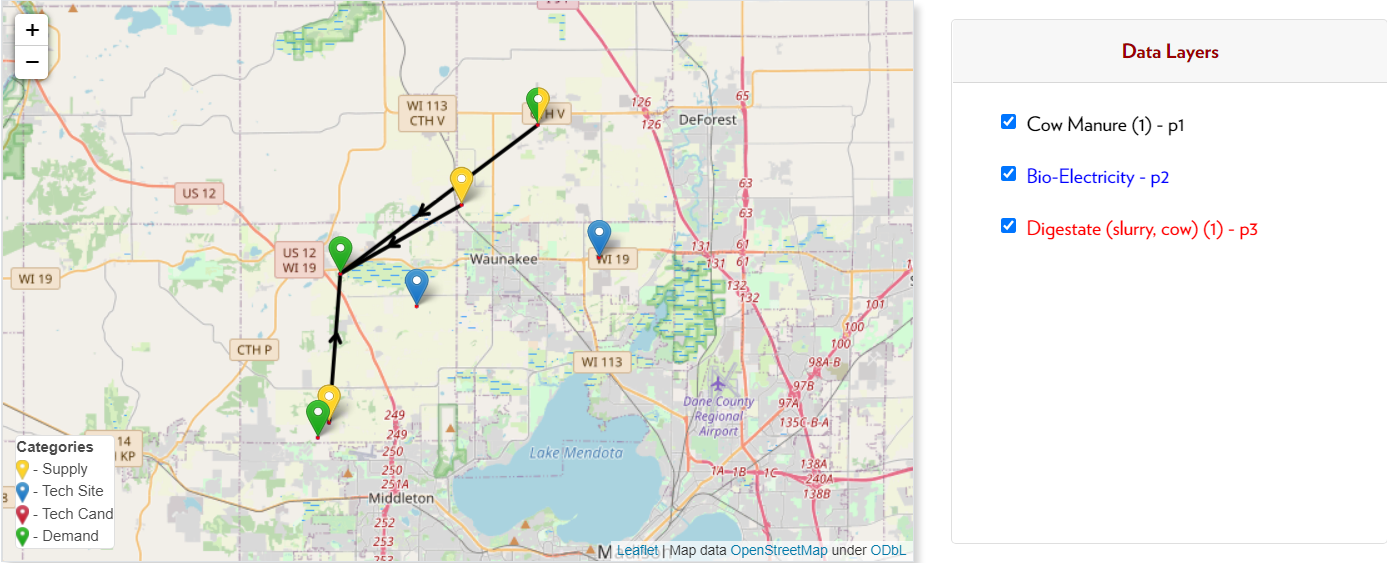
High Electricity Price
The final case we will look at is the high electricity price scenario. The results, which are displayed below, show that two out of the three CAFOs are now willing to process at least part of their waste. You may hover over the transportation routes to see how much of each product is being transported.
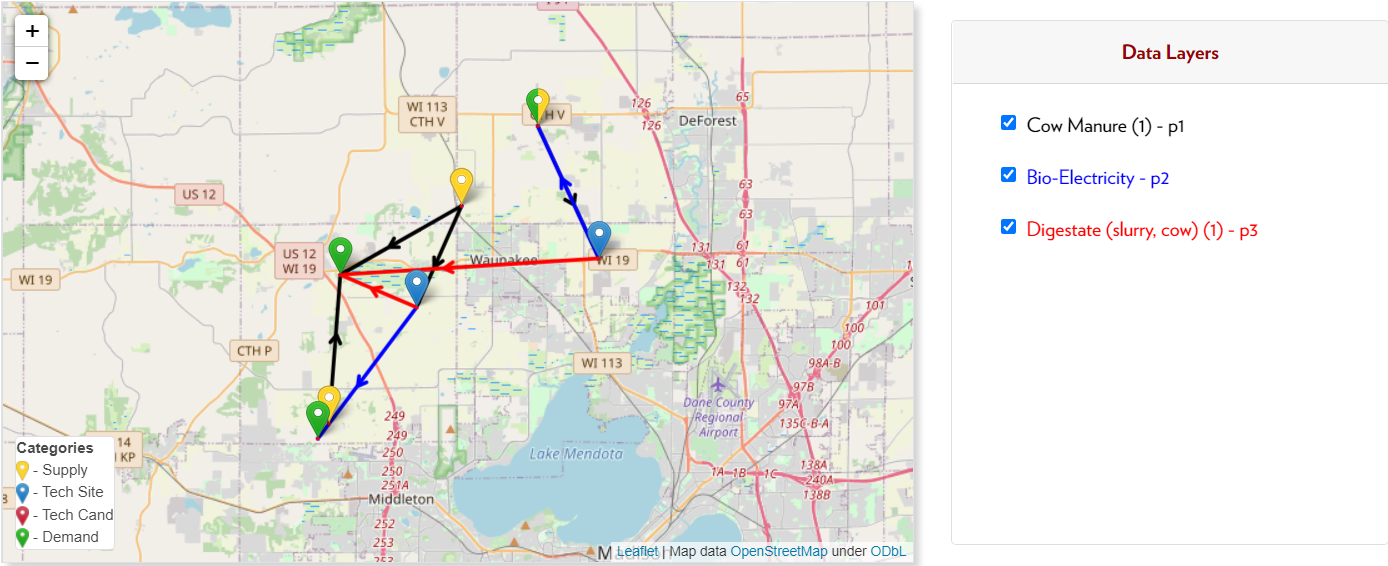
CAFO1 continues to send all their waste to the disposal facility and does not process any waste, CAFO2 sends 9,600 tonnes of manure per year to Tech1 for processing, and CAFO3 sends all of the manure (15,000 tonnes) to Tech2 for processing.
Using the cow manure, Tech1 is able to generate 300,000 kWh of bioelectricity per year, and Tech2 is able to generate 467,600 kWh of bioelectricity per year. The digestate waste product is sent to a waste disposal facility.
Conclusion
Processing cow waste into bio-electricity allows us to extract energy from waste rather than disposing of it; however, processing waste into bio-electricity is expensive. In this case study, we applied low, market, and high electricity prices to determine how much waste the system would process at each price point.
From the results, we can determine that low electricity prices and current market prices are not enough incentives for CAFOs to process their waste into energy. In both of those scenarios, all CAFOs decided to dispose of their waste rather than process it. Only when high prices are applied that CAFOs will begin to process part of their waste into bio-electricity.